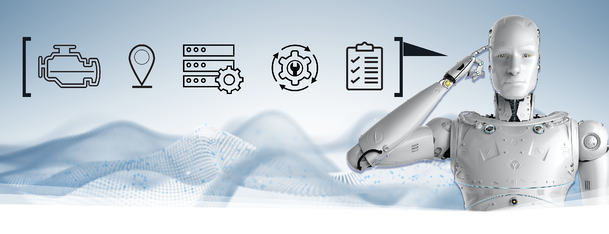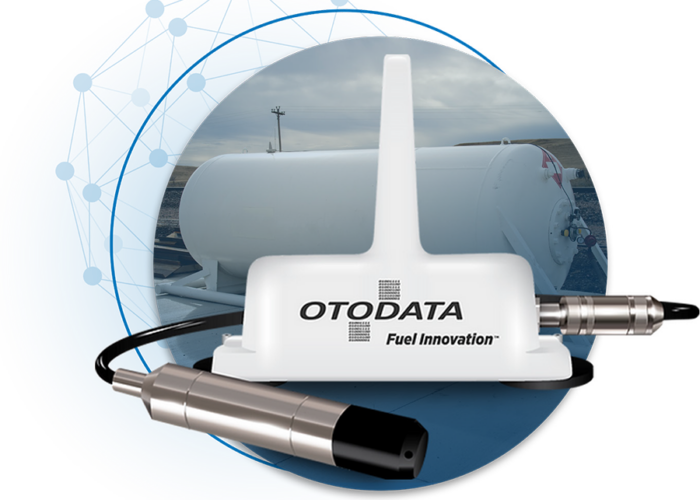While IoT data generates the capacity for predictive maintenance, Artificial Intelligence (AI) introduces the capacity for smart, deep-learning machines to make predictive maintenance more accurate, actionable, and automatic.
AI predictive maintenance leverages IoT data to predict and prevent mechanical failures. Where, according to research from Gartner, the cost of industrial machinery downtime can reach up to $540,000 for every hour that a system spends out of commission, industrial manufacturers can overcome these losses by investing in machinery equipped with IoT to collect data, and AI to make that data actionable.
AI machine learning has the ability to access historical data stored on the cloud and process real-time data gathered through IoT sensors at the edge. Referencing a knowledge bank powered by these sources of data, AI can generate informed analytics to automate commands in real time. In the context of predictive maintenance, AI analytics and commands serve the specific function of optimizing maintenance cycles for industrial machinery. Outfitting a manufacturing system with AI predictive maintenance can extend equipment life, improve efficiency among field technicians, and significantly decrease expensive machine downtimeall factors that greatly minimize production delays and hazardous work conditions that could cost manufacturers.
How AI Predictive Maintenance Works in Real Time
Machines equipped with AI predictive maintenance make use of real-time monitoring to understand the exact condition of a part at any given moment. Identify when a crucial mechanical part is reaching the end of its lifespan, and determine the optimal time to either automate a replacement or request for a replacement or repair by a technician.
For example, a report from Deloitte illustrates how titanium-cutting machinery uses embedded vibration sensors and torque monitors to predict the optimal instance when the machines diamond-tipped blade needs to be sharpened. The level of dullness of the diamond tips and, thus, the optimal time to sharpen them, has been difficult to figure out because of many different variables that affect it. The use of vibration or sound sensors and torque monitors can help assess the state of the machinery, as dull tips move and sound differently. The cost savings can run into the millions, as the cost of an hour of downtime went up $260,000 per hour, on average, between 2014 and 2016.
AI-equipped machines overcome issues with traditional planned maintenance cycles that are based on pre-calculated time schedules where contextual factors may be overlooked. They solve the issue of over maintenance, where costs are wasted on the work time spent changing or repairing parts more frequently than necessary, as well as the unused portions of parts that go unaccounted for. Similarly, AI-equipped machines overcome issues of poorly-designed planned maintenance cycles that may result in under maintenance, where the lifespans of parts are overestimated and machinery is, therefore, at risk of failure due to overuse. Predictive maintenance with AI also is more sophisticated than reactive maintenance where the repair is made after catastrophic machinery failuresresulting in profit-inhibiting downtime.
How AI Predictive Maintenance Makes Use of Historical Data
In combination with real-time data processing and automation, machines with AI predictive maintenance in place make use of historical data to gain better insights into the root cause of machine failures. They recognize failure patterns, and predict when malfunctions may arise based on the conditions under which they arose in the past.
Take, for example, an AI-equipped aircraft that uses historical data to determine patterns in engine overheating events. Historically, each time the overheating occurred, temperature and speed sensors recognized that the engine was operating at above 475 knots during periods when the outdoor temperature was above 80 degrees. Through machine learning informed by data-collecting sensors, the AI-equipped aircraft built an understanding of the conditions that surround the overheating events. The next time the aircraft travels in above 80-degree temperatures, the AI-equipped aircraft can respond to speeds encroaching 475 knots by predictively executing a command to notify pilots of the potential maintenance issue, and cap speeds at 470 knots to ensure safe functionality in the engine.
The ability of AI-equipped machines to facilitate a repair while still in operable order, and to use historical data to prevent future failures, eliminates expensive downtime and consequential damages that may occur when a machine is operating with overused, faulty parts. On an industrial scale, this translates into significant cost savingsequipment life is extended, field technicians are freed from routine maintenance to focus on more complex problems, and lost profits due to production delays are minimized.
Strong Connections are Maintained with Aeris
It goes without saying that a secure, strong, and reliable network is required for IoT and AI-enabled machines to send and receive vast amounts of data while processing and responding to maintenance concerns in real time. Aeris equips businesses with high-quality networks to support a multitude of IoT and AI applications. As a company dedicated to the cutting edge of technology, we look forward to opportunities to work with manufactures interested in implemented AI to improve their machinery and manufacturing systems with predictive maintenance capabilities.
To get started on a network solution with Aeris, Contact Us today.



